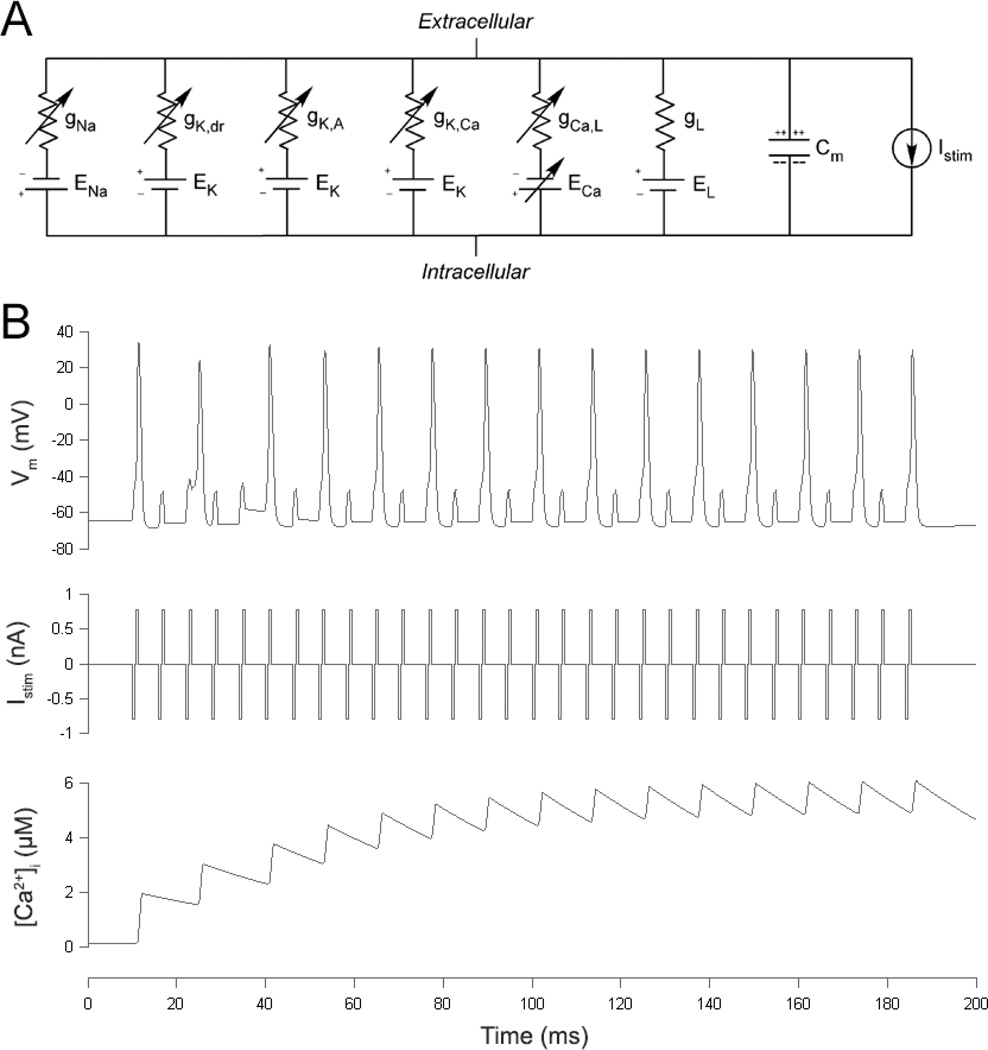Figure 2.
(A) Components of the Hodgkin-Huxley-type model include four types of voltage-gated ion channels (Na+, delayed rectifier K+, A-type K+, and L-type Ca2+), Ca2+-activated K+ channels, leak channels, a membrane capacitance, and a current stimulation source. N-type Ca2+ channels (not pictured) were included only in the cat model. (B) Membrane voltage (top) and intracellular calcium concentration (bottom) of a model salamander RGC in response to a stimulus burst (middle). Fifteen of the 30 stimuli in the burst evoked action potentials, a condition that was defined as threshold.

